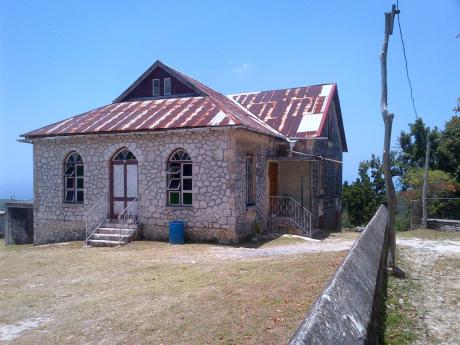Jamaica and Britain forever connected by names
DESPITE ‘EMANCIPATION’, ‘Independence’, and the Government’s current plans to get rid of the monarch of Britain as Jamaica’s head of state, these sovereign territories are forever linked by the names of places. But do you know how some places in Jamaica got their British names?
Starting with the counties – Cornwall, Middlesex, and Surrey, spelt Surry on some maps - the research findings say that they are named for the English counties of Cornwall, Middlesex, and Surrey. Cornwall county was named for being the westernmost county, just like the one in England. Middlesex was named for its location in the middle third of Jamaica. Surrey was named for the English county in which Kingston upon Thames is found because Kingston was its county town.
Regarding the parishes, St James was named for James, the Duke of York, who subsequently became King James II; Hanover, after Hanover, the Royal House of Britain, which lasted from 1714-1901; Trelawny, in memory of Sir William Trelawny, governor of Jamaica, 1767-1772; St Elizabeth, for Lady Elizabeth Modyford, wife of Sir Thomas Modyford, governor of Jamaica, 1664-1671; and Westmoreland, after Westmorland, a county in England.
In Middlesex, Manchester was named after the Duke of Manchester, governor of Jamaica, 1813-21. St Ann, one source says, was originally called Santa Ana by the Spaniards while another says it was named after Lady Anne Hyde, the first wife of King James II of England. Yet a third source says it was named for Anne, the eldest daughter of Lord Clarendon. Clarendon was named after Lord Chancellor Edward Hyde, the first earl of Clarendon. St Catherine was named for Katherine of Portugal, wife of King Charles II; and St Mary, for Mary, daughter of Sir Thomas Modyford, governor of Jamaica, 1664-1671.
In Surrey, Kingston was named after Kingston-upon-Thames, a London borough, and Portland was named in honour of the Duke of Portland, governor of Jamaica from 1722 -1726. St Thomas got its name from Thomas Modyford, governor of Jamaica from 1664-1771 one source says, and another claims that it was actually after Thomas Hickman, second British governor of Jamaica. St Andrew was named after the apostle Andrew, patron saint of Scotland.
In terms of parish capitals, only three seem to have a direct connection to British names. May Pen was named after cattle owner and trader of enslaved people Reverend William May. Mandeville is believed to come from the manor that was owned by the powerful Norman de Mandeville family. Falmouth is from Stokes Falmouth, an English town at the mouth of the River Fal.
Across the length and breadth of the country, many places were named after people who were prominent in government and/or were holders of enslaved people. Militia Colonel Hamilton Brown (1775-1843), holder of enslaved people and strong supporter of slavery, gave his name to a settlement, Brown’s Town, that he established on a piece of his land in St Ann. He built the original St Mark’s Church in Brown’s Town and is buried in its yard.
In Kingston, King Street was named after King William III. Barry Street got its name from Colonel Barry on whose piggery land Kingston was situated originally after the 1692 earthquake that destroyed Port Royal. Beeston Street in Kingston and Beeston Spring in Westmoreland were adopted from Sir William Beeston, lieutenant governor of Jamaica (1692-1700) and governor of Jamaica (1700-1701). Lawes Street in Kingston came from Nicholas Lawes, governor of Jamaica (1718-1722). Thomas Sutton of Sutton Street was the Speaker of the House of Assembly of Jamaica from 1691-92 and in 1698.
Sligoville in St Catherine and Sturge Town in St Ann are Jamaica’s first two free villages, set up for the newly freed people. Sligoville, set up in 1835 (before full Emancipation), was named after Howe Peter Browne, Second Marquis of Sligo, governor of Jamaica (1834-1836). Sturge Town, once known as Mount Abyla and established in 1839, was named in honour of Joseph Sturge, the architect of the campaign against West Indian apprenticeship.
Outside of Kingston, Cheesefield in St Catherine is located above the district of Time and Patience. It was named after the Cheese family from Scotland. They were plantation owners. Edward Cheese had 30 enslaved Africans in 1816. The number grew to 40 the following year. Amelia Cheese had 31 in 1831 while Emily Cheese owned four in 1817, and Sarah Cheese possessed 31 in 1816, and four the following year.
Fort Cromwell was changed to Fort Charles by the second British governor of Jamaica, Thomas Hickman, Lord Windsor, in honour of the restoration of the British monarchy in the person of Charles II. Symmers Bay, St Thomas, was named after Anthony Symmers, a merchant and landowner from Bristol, England.
Lyssons in St Thomas was named after Nicholas Lycence/Lissons, a landowner from Anguilla, in the second half of the 1600s. Stewart Town in Trelawny, laid out in 1812, was named after James Stewart (1766-1828), who was custos of the parish and owner of Stewart Castle. Charles Town in Portland was named after Admiral Charles Knowles, governor of Jamaica in 1752.
Emancipation, Independence, and Republican status cannot erase the stories of the names of some of Jamaica’s streets, districts, parish capitals, parishes, and counties and their connection to Britain. Now, go do your own research. There is great joy in discovery. Be inquisitive and ask questions. The information in this piece was gathered from extensive research and cross-referencing, and as such, it is hoped that it is as close to accurate as can be.

